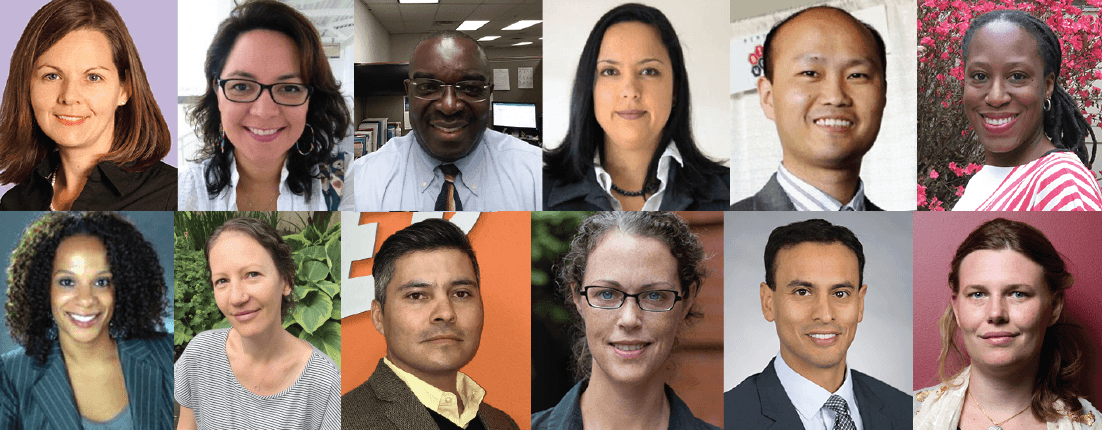Every day, millions of workers head to their jobs and breathe any number of airborne chemicals, particles or vapors, all of which may or may not be affecting their health. Measuring these pollution exposures – and making that data meaningful to workers and employers – is both difficult and expensive. Colorado State University engineers and social scientists are working to make such measurements simpler, more affordable and more comprehensive, so…
New Article: Trust, Conflict, and Engagement in Occupational Health
Trust, Conflict, and Engagement in Occupational Health: North American Epidemiologists Conduct Occupational Study in Communities Affected by Chronic Kidney Disease of Unknown Origin (CKDu). Science has been used as a tool of colonialism, and aspects of science privilege researchers in the global North (USA and Europe). The environmental justice and worker health movements in the USA and globally have influenced aspects of how occupational and environmental health research is conceived…
Continue reading “New Article: Trust, Conflict, and Engagement in Occupational Health”
The Color of Health: Residential Segregation, Light Rail Transit Developments, and Gentrification in the United States
JPB Fellow Jennifer Roberts‘s research. As the modern urban–suburban context becomes increasingly problematic with traffic congestion, air pollution, and increased cost of living, city planners are turning their attention to transit-oriented development as a strategy to promote healthy communities. Transit-oriented developments bring valuable resources and improvements in infrastructure, but they also may be reinforcing decades-old processes of residential segregation, gentrification, and displacement of low-income residents and communities of color. Careful…
JPB Fellows in the 31st Annual Conference of the ISEE 2019
The 31st annual conference of the International Society for Environmental Epidemiology (ISEE 2019) took place in the historic city of Utrecht, the Netherlands. The meeting theme was ‘”On Airs, Waters, Places”’ in recognition of what was probably the first surviving text on environmental health, written by Hippocrates of Kos some 400 years B.C.E. Find below what some JPB Fellows presented: Acetylcholinesterase inhibition and symptoms of depression and anxiety among adolescents near agriculture…
Continue reading “JPB Fellows in the 31st Annual Conference of the ISEE 2019”
There is no Green Book for Walking
Why do African-Americans still need to cautiously navigate as pedestrians? by JPB Fellow Jennifer Roberts. Late last year, the movie “Green Book,” starring Mahershala Ali and Viggo Mortensen was released. This true story, which received three Oscars, including Best Picture and Best Supporting Actor for Ali, was about Tony Lip (Mortensen), an Italian-American bouncer in the early 1960s, being hired to drive Dr. Don Shirley (Ali), an African-American jazz pianist,…
How to consider nature’s impact on mental health in city plans
Almost one in five adults in the U.S. lives with a mental illness. That statistic is similar worldwide, with an estimated 450 million people currently dealing with a mental or neurological disorder. Of those, only about a third seek treatment. Interacting with nature is starting to be recognized as one way to improve mental health. A number of scientific studies have shown that nature experiences may benefit people’s psychological well-being and cognitive function.…
Continue reading “How to consider nature’s impact on mental health in city plans”
Article: Nature and mental health: An ecosystem service perspective
JPB Fellow Greg Bratman’s research. A growing body of empirical evidence is revealing the value of nature experience for mental health. With rapid urbanization and declines in human contact with nature globally, crucial decisions must be made about how to preserve and enhance opportunities for nature experience. Here, we first provide points of consensus across the natural, social, and health sciences on the impacts of nature experience on cognitive functioning,…
Continue reading “Article: Nature and mental health: An ecosystem service perspective”
Are sleep patterns influenced by race/ethnicity – a marker of relative advantage or disadvantage?
Evidence to date Sleep is a fundamental necessity of life. However, sleep health and sleep disorders are not equitably distributed across racial/ethnic groups. In fact, growing research consistently demonstrates that racial/ethnic minorities are more likely to experience, for instance, shorter sleep durations, less deep sleep, inconsistent sleep timing, and lower sleep continuity in comparison to Whites. However, racial/ethnic disparities in reports of sleepiness and sleep complaints are inconsistent. Racial/ethnic groups…
Senior Fellows 2014 – 2017
The first cohort of JPB Environmental Health Fellows was comprised of nine assistant professors (Faculty Fellows) from academic institutions across the U.S and three research scientists from government agencies (Agency Fellows).
The JPB EH Fellowship By Numbers
The JPB Environmental Health Fellowship Program was developed to create compassionate environmental health leaders who inspire and engage their colleagues, students, institutions, and communities in order to solve complex environmental health problems. In 2014, after a national recruiting campaign the first cohort of 12 scholars (nine from Academic Institutions and three from Federal Agencies) were selected. Together they have implemented interdisciplinary research projects that advance the knowledge on social and…
